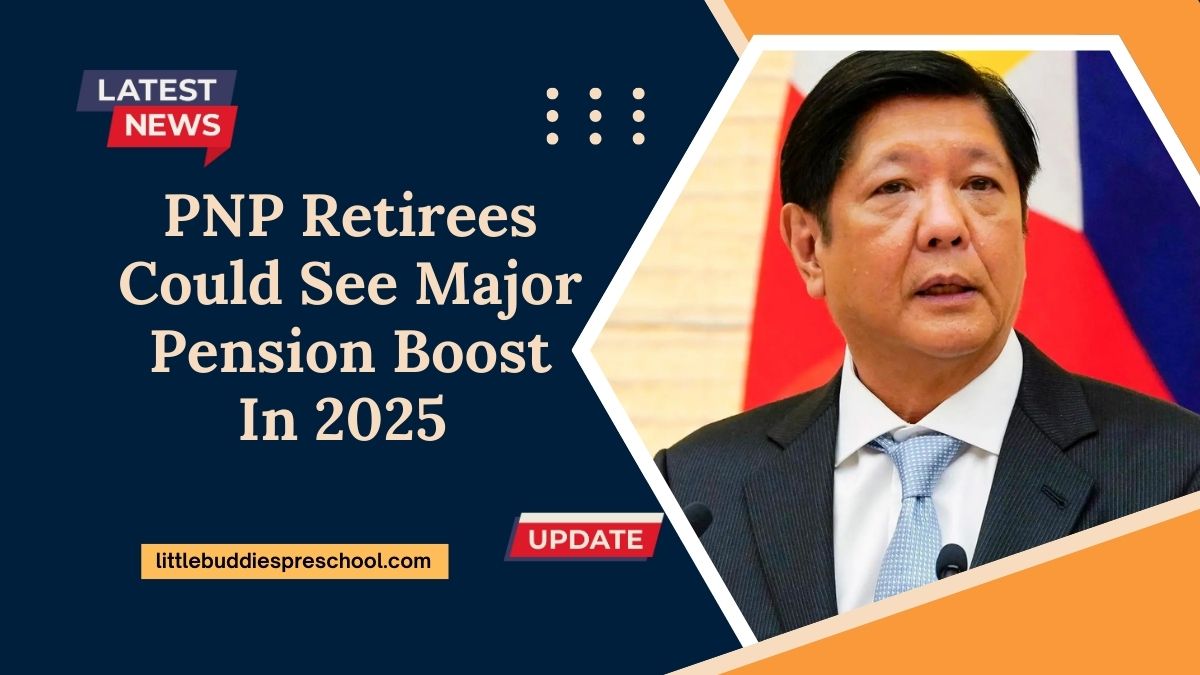Thousands of Philippine National Police (PNP) retirees may soon receive a significant increase in their monthly pension benefits, as part of a proposed reform under the 2025 Military and Uniformed Personnel (MUP) pension system overhaul.
This legislative initiative, currently under discussion, aims to modernize and sustain the MUP pension system while correcting long-standing benefit disparities among uniformed retirees.
The bill is widely viewed as one of the most impactful pension reforms in recent years, addressing not just payout amounts but also the fiscal sustainability and fairness of the system across ranks and years of service.
What the Proposed Pension Reform Means for PNP Retirees
The 2025 pension reform proposal for MUPs—including PNP retirees—focuses on enhancing monthly pension benefits while introducing mechanisms to protect government finances in the long term.
Key Objectives of the Reform:
- Increase monthly pension payouts
- Partially restore indexation for fairer benefit adjustments
- Introduce a contribution-based funding model
- Ensure equitable benefits across all service ranks
- Reduce the growing fiscal pressure on the national budget
Key Features of the Proposed Pension Reform
1. Pension Hike and Indexation Reform
One of the central features of the proposed law is a structured increase in monthly pensions for PNP retirees, including:
- Base pension recalibration based on rank and years served
- Partial indexation restoration, where future salary increases for active personnel partially reflect in pension hikes
- Removal of full automatic indexation, which had been deemed unsustainable for government budgets
This shift ensures that retirees will receive fair increases without overwhelming fiscal obligations.
2. Shared Contribution Funding Model
To ensure long-term sustainability, the proposed reform moves away from a fully government-funded pension system. Instead, it introduces mandatory contributions from active uniformed personnel:
| Contributor | Initial Contribution Rate | Target Contribution Rate |
|---|---|---|
| Active PNP Personnel | 5% of monthly salary | Up to 9% in gradual phases |
| Government (Matching) | Equal amount as personnel | Matching contribution |
This mirrors the Government Service Insurance System (GSIS) used by civilian government workers and reduces long-term dependency on the national budget.
Who Stands to Benefit the Most?
The reform particularly favors older retirees and lower-ranking officers who have historically been left behind by recent salary standardization upgrades.
Prioritized Groups:
- Retirees prior to 2018, who did not benefit from SSL III–V
- Non-commissioned officers and lower-ranked personnel with low pension baselines
- Mid-level officers whose pension remains below par despite years of service
Additionally, caps will be placed on the pension increase for high-ranking officers to ensure fairness and avoid disproportionate benefits.
Estimated Timeline and Implementation
If passed by late 2024, the new law will take effect by early 2025. A 3- to 5-year transition period is proposed to phase in contribution rates and implement recalibrated pension structures.
| Implementation Phase | Expected Timeframe |
|---|---|
| Legislative Approval | Q4 2024 |
| Initial Rollout | Q1 2025 |
| Contribution Phase-in | 2025–2027 (Gradual Adjustment) |
| Full Pension Adjustment | By 2028 |
The Department of Finance (DOF) and Department of Budget and Management (DBM) will oversee implementation and have assured that existing pensions will remain uninterrupted during the transition.
Summary of Proposed Pension Changes
| Reform Area | Current System | Proposed System (2025) |
|---|---|---|
| Funding Model | Fully government-funded | Shared contribution (Personnel + Government) |
| Indexation | Previously fully automatic | Partial and structured indexation |
| Pension Calculation | Based on old salary tables | Rebased to updated salary rates by rank |
| Priority Beneficiaries | Uniform across ranks | Greater boost for lower ranks and pre-2018 retirees |
| Implementation Timeline | N/A | Phased (3–5 years) starting 2025 |
Long-Term Goals and Fiscal Impact
As of 2023, MUP pension payouts consumed over 30% of the total defense budget. The proposed pension reform aims to address this by reducing fiscal risk through:
- Sustainable contribution plans
- Limiting automatic indexation
- Improving fiscal predictability for future budgets
- Promoting equity and merit-based benefit adjustments
These reforms represent a shift from an entitlement-based system to one of shared responsibility, ensuring the pension system remains robust for generations to come.
The 2025 PNP pension reform proposal offers a transformative shift in how retirement benefits are structured for the nation’s uniformed personnel.
With higher monthly pensions, fairness in benefit allocation, and a sustainable funding model, the law promises to protect both current retirees and future generations of public servants.
If passed and properly implemented, this will not only ease the financial burdens of aging PNP retirees but also secure the long-term stability of the country’s military and police pension system.
FAQs
Will the current pensions of retirees be affected during the transition?
No. Retirees will continue receiving their current pensions while the new system is phased in.
Do active PNP personnel need to start contributions immediately?
Yes, starting in 2025, active-duty personnel will begin contributing 5%, with gradual increases over time.
Will all retirees receive the same pension hike?
No. Increases will be tiered based on rank, years of service, and whether the retiree benefited from previous pay reforms.

